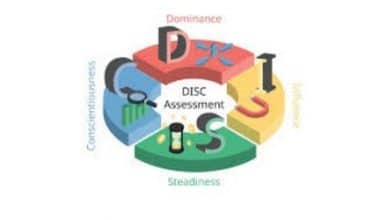If you work in human resources, you may be required to do a job evaluation in order to determine the remuneration of a specific role. By evaluating the responsibilities of each role, job evaluations assist you in determining equitable pay for all employees. If you produce and administer job assessments, learning more about them can help you improve the efficiency of your operation. In this article, we will answer the question, “What is a job evaluation?” as well as explore the methods available, discuss how to build a job evaluation process and address any questions you may have about the subject.
What is a Job Evaluation?
Job evaluations are a step-by-step procedure for determining how much a position should be paid. There are various techniques of job evaluation, but the goal of each is to determine the worth of the position to the firm. This guarantees that the pay is commensurate with the labor. Instead of focusing on the employee who occupies the position, the HR department conducts job evaluations based on the role. This is common when a company is starting up or adding new roles.
HR creates job evaluations, frequently in collaboration with labor unions, other social partners, and commercial consulting firms.
The benefit of job evaluation is that it does not consider the attributes of the job holder. According to European Commission research on the subject, the relative worth of a job is judged regardless of the attributes of the specific job holder.
The relative value equates to a ranking, which corresponds to basic pay brackets or scales (referred to as wage grids). Personal attributes of the job holder (such as seniority, education level, and tenure) are rewarded with advancement within the corresponding wage bracket.
The European Commission aggressively promotes job evaluation. According to Cordis, which coordinates EU-supported R&D activities, 49% of European private-sector businesses employ a formal Job Evaluation scheme, with SMEs accounting for less than 3%. Employees suffer from unstructured wage payment procedures and a lack of requirement-based career and skill development as a result of this lack of evaluation.
Why Do Job Evaluations?
Regular job assessments make employees feel valued and help foster a positive business culture. The following advantages can result from conducting job evaluations:
#1. Employee Retention
A lack of promotion prospects is cited as a significant or minor reason for 63% of employees quitting their current jobs. Regular job assessments can help prevent this by allowing employees to be recognized for any improvements in responsibility or skill growth since the last evaluation.
As a result, your company’s staff retention rate will improve. Because the average cost of replacing an employee is believed to be 33% of their annual income, enhancing employee retention will eventually increase your bottom line.
#2. Futureproofing
Futureproofing your business means planning for future changes now. You may utilize job evaluations to ensure you have the correct people in your organization to support your vision by anticipating where you expect your firm will be in a year or five years. Job assessments can be used to adjust to new budgets, prepare for expansion, or even reorganize if you intend to downsize.
#3. Closing the gender wage disparity
Large, well-established organizations have more salary disparities between men and women. Pay inequality is cited by 39% of employees as the primary reason for leaving a job. However, by conducting regular, objective job evaluations, you can identify any wage disparities and address them before they become problems.
When Should Job Evaluations Be Performed?
There is no industry standard for how frequently you should do job evaluations in your company. They can be time-consuming and expensive, but in order to stay competitive, you should conduct job evaluations at least every few years. However, imagine your company undergoes a substantial transition or you notice a large personnel turnover. In that situation, it may be worthwhile to do a job evaluation early on to discover whether income and perks are a factor.
Job Evaluation Methods
Job evaluations exist in a variety of shapes and sizes, but all techniques are based on two factors: comparison and data.
To put it another way, all job evaluation methodologies assist you understand how a certain position compares to other positions inside the firm (internal comparison) or how a position is valued across the job market (external comparison). All evaluation methods use either qualitative data, which compares positions by evaluating their qualities and attributes, or quantitative data, which compares positions by assigning numerical values to each one.
#1. Internal Procedures
1. Classification Method
Classification is a qualitative method that entails drafting or assessing job descriptions and then categorizing them into distinct grade levels. Different job qualities, such as seniority, job duties, and skill level, should be reflected in grade classifications. Vice president, director, assistant director, senior manager, manager, and coordinator are examples of grade designations.
Each job family or department should have its own set of grades. Once classified, their respective importance on the success of the organization will decide to pay.
This method is relatively simple to implement. It is, however, highly subjective.
2. Point Factors Method
The most popular quantitative method is the point factor method. To establish the proper compensation for a certain job, it employs a point system. This point system is developed by identifying characteristics that influence remuneration (such as skill or effort) and then allocating points to positions depending on these factors. Compensation is determined by the total amount of points.
3. Ranking Method
The ranking is a straightforward qualitative method in which all occupations in an organization are arranged in a hierarchy. The higher a job is ranked, the more significant it is to the firm. Unlike categorization, ranking does not need the creation of grades. This method is highly subjective and should be used in conjunction with another method to avoid errors.
4. Factor Comparison Method
The factor comparison method is a sophisticated quantitative technique that combines the point factor and ranking methods. First, as with the point factor method, factors influencing compensation must be identified and assigned.
Then, rather than constructing a point system, HR uses benchmark positions that are known to pay correctly to determine how each aspect should be scored. Then, instead of points, monetary values are used. These numbers are then applied to other jobs in order to calculate remuneration.
#2. External Procedure
1. Competitive Market Analysis Method
Competitive market analysis is a quantitative method for measuring how competitive the compensation of a company is. This method is quite simple. Analysis entails gathering market data (often from third-party sources such as PayScale or Glassdoor) and comparing the salaries in the data set to the company’s salaries for the same jobs. External data is typically required to be purchased.
Job Evaluation Characteristics
Job evaluation seeks to generate a ranking of jobs from which a reasonable and acceptable pay structure can be constructed.
The following are some of the most important aspects of job evaluation:
- It attempts to evaluate jobs rather than persons.
- Job evaluation standards are relative rather than absolute.
- The job analysis provides the fundamental facts upon which job evaluations are based.
- Job evaluations are completed by groups rather than individuals.
- In job evaluation, some degree of subjectivity is always present.
- Job evaluation does not establish pay scales; rather, it serves as a foundation for determining a reasonable salary structure.
How Do I Conduct Job Evaluations?
Step #1: Determine the evaluation’s purpose and scale.
A good and productive job evaluation, regardless of scale, begins with planning.
You should begin by deciding on a scale for your evaluation. Are you assessing a certain function, a department, or the entire organization? Consider the evaluation’s purpose: are you expanding benefits, adjusting compensation, or restructuring the organization? Answering these questions will assist you in determining what resources to devote to the evaluation and who your key stakeholders will be.
Step #2: Decide on a method.
Your method should be chosen based on the answers to your questions in Step 1. If you are seeking to restructure a large organization, for example, the factor comparison model may be the most effective.
You should also consider any budgetary limits, the size of your business, and the schedule for completing this evaluation. Assume, for example, that your compensation structure has considerable disparities. In that scenario, you will need to remedy this issue fast before hiring any additional people.
Step #3: Gather all relevant facts and information.
Before you begin your evaluation, you need to gather all of the necessary information. Depending on the scope of your project, you may need to gather data from your human resource management (HRM) or human resource information system (HRIS). You may require the following items:
- Current pay rates
- Job descriptions and titles
- Demographics of the workforce
- Current job family or grade categorization system
You may also require information that is not immediately available on your HRM or HRIS system, such as whether employees believe their pay is fair. compensation surveys should include a quantifiable, numerical scale for responses, for example, where 5 represents highly fair compensation and 1 represents very unfair pay.
Any survey involving a subjective issue should include closed questions (yes/no-style questions) or a numerical scale. You must be able to quantify the replies in order to appropriately evaluate the data. Keep in mind that open-ended, qualitative questions may cause employees to use the survey to complain about other difficulties, such as their relationship with their manager.
Step #4: Form your team.
You can establish your team after gathering the relevant information and determining the boundaries of your evaluation. Even if your project is tiny, it is always advisable to have at least one other person review alongside you. Being accountable to others will aid in avoiding prejudice during a highly subjective process.
Step #5: Be ready to reassess.
As you progress through the project, you may encounter some ambiguity in determining the most significant components of the jobs. This is very normal and to be expected. Do not be afraid to question your team’s methodology, reach out to supervisors to hear other perspectives, or even change your method entirely. Above all, strive to be fair and transparent with employees throughout the process.
Step #6: Inform your stakeholders.
Employees may find job evaluation tough. While you are aware that you are evaluating the role rather than the individual, employees may be unable to detach themselves from their current position. For example, an office administrator may feel underappreciated if you do not value their role as highly as a senior management.
It is therefore critical to have open and honest discussions about the process with managers, as well as to have a solid and recorded process that employees and managers may refer to whenever necessary. Both will help to foster an honest culture within your firm. After their job has been appraised, it will also help employees comprehend your decision-making process.
Once you have completed the evaluation process, you should notify the appropriate personnel via mail within five working days. They should acknowledge the change by signing the message and returning it to their manager or your HR department.
What is the Distinction Between Job Analysis and Job Evaluation?
To execute a job evaluation, first conduct a job analysis. The process of establishing a job description is known as job analysis. This is accomplished by establishing the tasks and responsibilities of a position, as well as the abilities and expertise required of a candidate. For example, if you are developing a cashier position at your store, you will need to decide if candidates should have a high school diploma or a higher education.
This information is required for job evaluation in order to establish how much an employee should be paid for meeting the requirements of the employment and carrying out their roles and responsibilities.
Performance Evaluation vs. Job Evaluation
A job evaluation evaluates a company’s job roles and remuneration packages. After a firm restructuring, for example, you can assess if an office manager is being adequately compensated for their additional managerial responsibilities. A performance evaluation, on the other hand, determines whether or not the employee in that job executes their duties well—for example, whether or not a salesperson meets their sales targets.
Job evaluations are thus typically focused on the overall structure of the organization. The accomplishments of individuals are the focus of performance evaluations, in contrast.
Conclusion
Job evaluation can be both time-consuming and emotionally draining. During this process, you will confront problems such as determining whether you can remain objective or whether your decisions correctly reflect your workplace. It is crucial to note, however, that job assessments are undertaken to maintain a fair and consistent remuneration package for employees, as well as possibilities for development and promotion for all.
Related Articles
- EMPLOYEE EVALUATIONS: How To Conduct Them Effectively
- PERFORMANCE EVALUATION: Definition & All You Need
- EMPLOYEE PERFORMANCE EVALUATION: Definition, Benefits, and How to Conduct One
- WORK GOALS: Top 20+ Professional Work Goals & Evaluation






